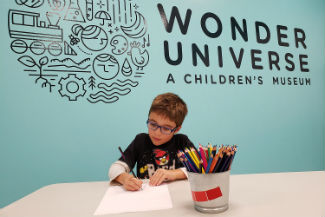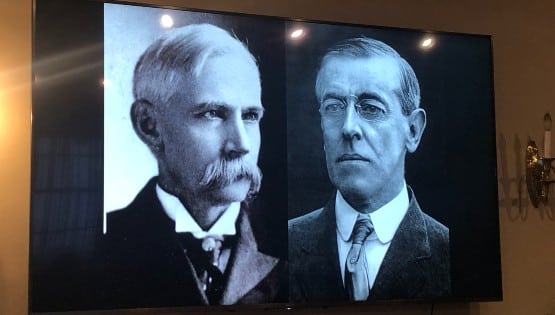By Julia Kell

A local children’s museum with big dreams for its future turned to graduate students in Virginia Tech’s Office of Economic Development for ideas that could help double its annual attendance — from 20,000 to 45,000 people a year.
Previously known as the Children’s Museum of Blacksburg, Wonder Universe recently reopened in a larger space at the New River Valley Mall in Christiansburg, Virginia. As part of an economic development study project, students analyzed the market and recommended changes to fuel growth.
John Provo, director of the Office of Economic Development, part of Outreach and International Affairs, said, “As part of our ongoing partnership with academic departments, we have one project per year where students are the leaders and faculty are the support. This kind of real-world project lets students experience firsthand the kind of work economic developers do every day.”
The student team urged the museum to develop exhibits that encourage hands-on engagement and collaboration, provide exhibits that are both adult- and child-friendly, and diversify partnerships to allow for more subsidized memberships and better access.
“We provided some idea of what should be in the upcoming exhibits and how they can help make it not just for the children but for the whole family. Our research found that museums where adults can participate and play with their children are more helpful for a child’s early development,” said Khushboo Gupta, who received her Ph.D. in the planning, governing, and globalization program in the School of Public and International Affairs.
The students worked to understand the value the museum brought to the New River Valley region, analyzing studies and data related to children’s museums in order to determine best practices. Research showed that funding high-quality early-childhood programs is smart; a $1 investment can yield $4 to $9 in return, according to the National Forum on Early Childhood Policy and Programs.
Research also highlighted the popularity of interactive exhibits that promote creativity and include problem-solving components. A set of blue cubes that children could stack and build whatever comes to mind was one of the most popular exhibits at the Children’s Museum of Blacksburg. Students recommended that the museum create similar exhibits in the new location.
Students found the museum could attract more lower- to middle-income families by offering reduced-price memberships, certain days and hours, weekend packages, and parent-education programs.
Neda Moayerian, a doctoral candidate in the planning, governing, and globalization program, was interested in working on the project because of the positive impact it could have on future generations. “I think children’s museums are a long-term, sustainable way of elevating society,” she said.
Past student-led projects have included work on the Rural Retreat historic train depot in 2016 and collaborating with Downtown Christiansburg Inc. to develop revitalization strategies in 2018.










